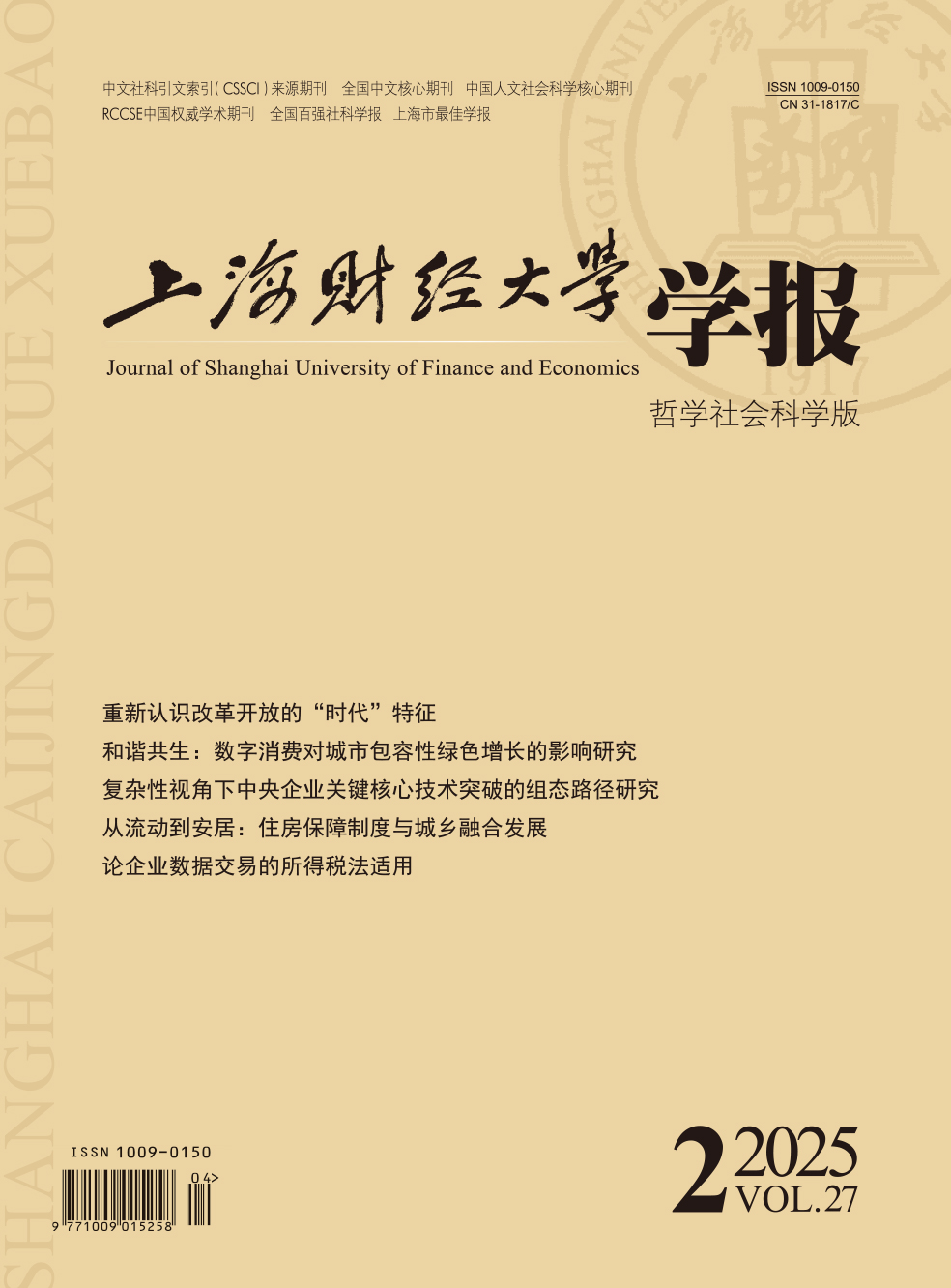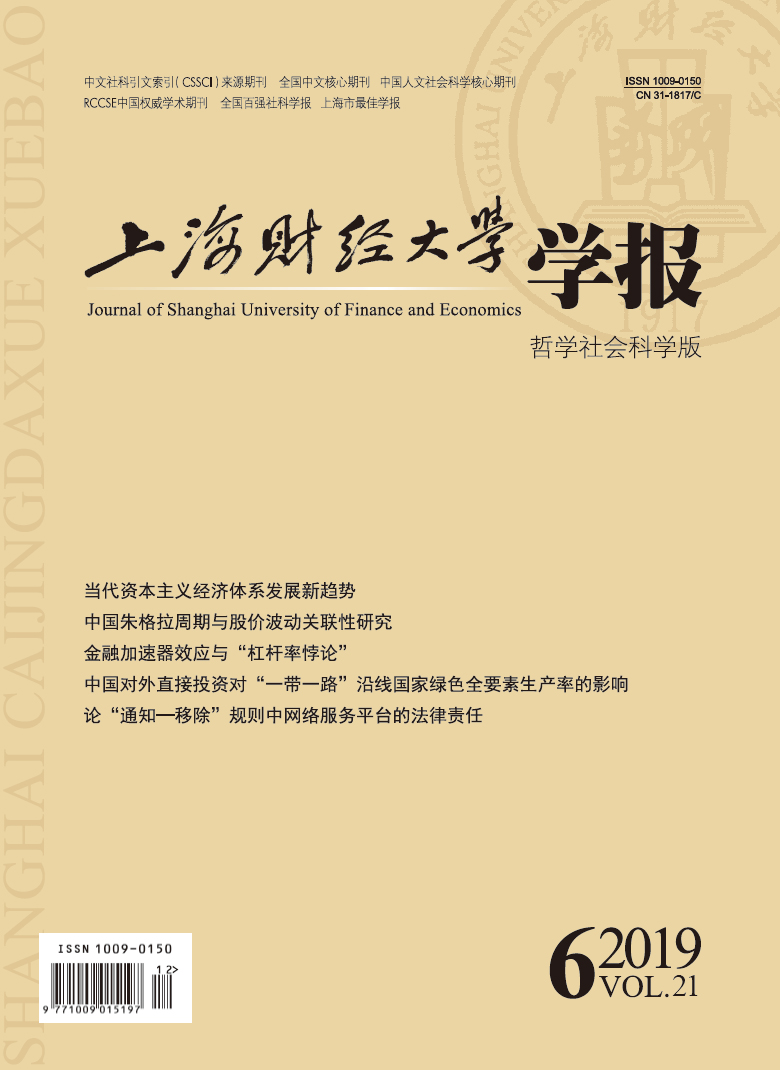制造业部门的杠杆率调控受制于金融加速器效应和金融资源配置结构。文章从金融加速器的理论框架出发,围绕金融资源配置结构与企业杠杆响应机制两个基本问题,以煤炭、钢铁、水泥、玻璃、电解铝五个典型制造业部门的微观调查数据为样本,对实际债务负担和资产负债率两个微观企业杠杆率指标的宏微观响应机制进行了综合探讨。研究发现:(1)微观制造企业的杠杆率演变对于宏观货币环境变化的敏感度远高于微观因素;(2)宏观景气和货币调控对微观企业杠杆都呈现显著负向冲击,说明其产值(收入)弹性显著高于利息弹性,资产端弹性远高于负债端弹性,金融加速器效应现实存在,这是“杠杆率悖论”的基础;(3)制造业部门内部存在明显的金融资源错配问题,并在经济上行期或货币宽松阶段驱动低效率企业的投资潮涌,而在经济下行期或货币紧缩阶段放大金融加速器效应。因此,对制造业部门而言,经济转型期的结构性去杠杆应当在相对稳定的货币环境下进行,同时应强化宏观调控与行业管理,并立足于打造“优胜劣汰”的产业政策体系,重点推进金融资源配置的结构优化。
金融加速器效应与“杠杆率悖论”——基于制造业部门的实证研究
摘要
参考文献
17 宋国青. 利率是车, 汇率是马[M]. 北京: 北京大学出版社, 2014.
26 中国人民银行杠杆率研究课题组. 中国经济杠杆率水平评估及潜在风险研究[J]. 金融监管研究,2014,(5). DOI:10.3969/j.issn.2095-3291.2014.05.008
29 Ai H J, Li K, Yang F. Financial intermediation and capital misallocation[M]. Minnesota: University of Minnesota, 2015.
30 Bernanke B,Gertler M,Gilchrist S. The financial accelerator and the flight to quality[J]. The Review of Economics and Statistics,1996,78(1):1–15. DOI:10.2307/2109844
32 Chen K J,Song Z. Financial frictions on capital allocation:A transmission mechanism of TFP fluctuations[J]. Journal of Monetary Economics,2013,60(6):683–703. DOI:10.1016/j.jmoneco.2013.06.001
33 Christensen L J, Motto R, Rostagno M. Financial factor in business cycles[M]. Evanston: Northwestern University, 2007.
34 Cúrdia V,Woodford M. Credit frictions and optimal monetary policy[J]. Journal of Monetary Economics,2016,84:30–65. DOI:10.1016/j.jmoneco.2016.10.003
36 Hsieh C T,Klenow P J. Misallocation and manufacturing TFP in China and India[J]. Quarterly Journal of Economics,2009,124(4):1403–1448. DOI:10.1162/qjec.2009.124.4.1403
37 IMF. Vulnerabilities, legacies, and policy challenges risks rotating to emerging markets[R]. IMF Global Financial Stability Report, 2015.
38 Mickinnon R I. Money and capital in economic development[M]. Washington D C: The Brookings Institution, 1973.
40 Restuccia D,Rogerson R. Policy distortions and aggregate productivity with heterogeneous plants[J]. Review of Economic Dynamics,2008,11(4):707–720. DOI:10.1016/j.red.2008.05.002
41 Shen C H,Lee C C. Same financial development yet different economic growth:Why?[J]. Journal of Money,Credit,and Banking,2006,38(7):1907–1944. DOI:10.1353/mcb.2006.0095
43 Ueda K. Deleveraging and monetary policy:Japan since the 1990s and the United States since 2007[J]. The Journal of Economic Perspectives,2012,26(3):177–201. DOI:10.1257/jep.26.3.177
44 Watanabe W. Prudential regulations and banking behavior in Japan[J]. Japanese Economy,2011,38(3):30–70. DOI:10.2753/JES1097-203X380302
引用本文
王韧, 李志伟. 金融加速器效应与“杠杆率悖论”——基于制造业部门的实证研究[J]. 上海财经大学学报, 2019, 21(6): 35-49.
导出参考文献,格式为:





 , 2
, 2 4670
4670  5576
5576

